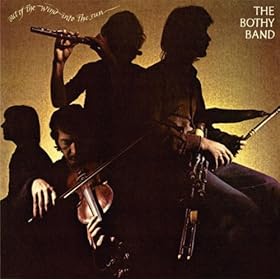 The second of two 12/8 slides the Slow and Steady group are learning, The Priest is in G and sits nicely on flutes and whistles allowing some distinctive punchy phrases to pop through.
The second of two 12/8 slides the Slow and Steady group are learning, The Priest is in G and sits nicely on flutes and whistles allowing some distinctive punchy phrases to pop through.
For further information on slides, check out the links on The Road to Lisdoonvarna, the slide in E minor that precedes this tune in the set. The tune is primarily constructed around a broken chord of G major and allows a strong rhythm to be developed through the simple repetition of a handful of notes.
Slides can be played quite fast so that the rhythm can be brought out and emphasised, but try playing it as a waltz while learning it in order to get inside it more. This maintains the relationship between the notes, but gives you more time to remember the tune. Decoration tends to be quite simple, just single cuts and strikes, particularly in the first part. The second part can take short rolls that help accent the rhythm, but only attempt these once you have the tune firmly established.
Resources for this tune are on the Resources page for this year.
A search around reveals that this may also be known as Is it the Priest You Want?, (Ne An T-Sagart Ta Uait?) which suggests that there may have been words to go with it at some point. The Fiddler’s Companion gives a version of it and identifies it as having first been published by Edward Bunting in 1796 and suggests it was more recently popularised by Johnny O’Leary, who learned it from Din Tarrant, both from Kerry. You can download a facsimile of Bunting’s The Ancient Music of Ireland from the Petrucci Library.
 Like many, I originally learned this from a recording by The Bothy Band, who play this at the start of a set on Out of the Wind, Into the Sun, their third and final studio album. The Bothy Band, along with Planxty, were highly influential in raising the standards of Irish music recordings and arrangements in the 1970s. They influenced Scottish groups like Ossian (dubbed “The Scottish Planxty” maybe in more recent times) and Lúnasa, who have been compared with them for their musicianship and approach.
Like many, I originally learned this from a recording by The Bothy Band, who play this at the start of a set on Out of the Wind, Into the Sun, their third and final studio album. The Bothy Band, along with Planxty, were highly influential in raising the standards of Irish music recordings and arrangements in the 1970s. They influenced Scottish groups like Ossian (dubbed “The Scottish Planxty” maybe in more recent times) and Lúnasa, who have been compared with them for their musicianship and approach.
Photos: (top) The Bothy Band (c) unknown ( from Kölncampus website); below, album cover from Amazon.

